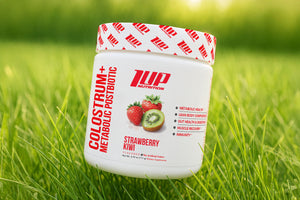Our society is a sedentary one.
The vast majority of our days are spent sitting or lying down. We drive longer commutes, we work for more hours sitting at a desk, and during our free time, we’re usually plopped down on the couch watching TV or staring at some other type of electronic device (smartphone, tablet, etc.).
Sure, we may get up and move for an hour or two during the day with our workouts, but by and large, we spend our lives sitting hunched over.
This poor posture can lead to a number of problems, not the least of which is looking like Quasimodo on his way to ring the bell tower.
Problems Associated with Poor Posture
Unnecessary Stress on Joints and Muscles
Poor posture places more stress on the spine, muscles, and joints, leading to all sorts of aches and pains.
Having poor posture also can lead to misalignment of the spine and joints, placing more stress on them, which induces larger amounts of wear and tear, and ultimately leads to arthritis. You may have seen this (or experienced it yourself) with the forward head lean (a.k.a. nerd neck).
Ideally, the ears should be in line with the shoulders when viewing someone from the side.
Poor Circulation
Poor posture can also lead to poor blood flow and circulation throughout the body, which may lead to the development of varicose veins. Additionally, since blood flow can be impacted, muscle recovery from workouts may be negatively impacted as it is the blood that carries the nutrients (essential amino acids, glucose, etc.) to our muscles that allows them to repair, recover, and grow.
Fatigue
As we mentioned above, poor posture places undue stress on areas of the body that aren’t meant to bear that type of load for prolonged periods of time. However, when you chronically have bad posture, these structures are subjected to loads for extended periods of time, which can lead you to feeling fatigued and lethargic, not to mention achy!
Poor Mood
Research from 2017 notes an association between poor posture and bad moods. However, when researchers instructed the participants to adopt an upright posture, individuals reported improved mood, reduced fatigue, and decreased self-focus.[1]
Basically, if you’re feeling down in the dumps, walking tall, sitting upright, and standing proud may improve your mood and self-confidence.
Difficulty Breathing
When you sit with poor posture, you’re compressing the lungs, diaphragm, and all the other organs in your body. As such, you may experience difficulty breathing, which can lead to low energy levels and feelings of fatigue. Remember, oxygen is involved in energy production as well as the growth and repair of cells. It’s also important for brain health and function, too!
Headaches
Poor posture usually places strain on the neck, which creates tightness and eventually leads to headaches.
Back Pain
Poor posture can lead to tightness and shortening of the lumbar muscles, which are a key contributor to lower back pain.
8 Ways to Combat Bad Posture from Sitting
Head Retractions
One of the biggest problems from poor posture is the forward leaning head. To combat this, we need to work on strengthening our necks in the opposite direction. We do this by drawing the head directly backwards so that our ears are in line with our shoulders.
Do not tilt the head up or tuck the chin. Pull your head straight back, hold for two seconds and repeat for 10 total repetitions.
When performing this exercise, make sure the core is engaged and the shoulders are pulled down and back.
Wall Slides
Sitting all day can lead to tightness in the pecs and shoulders and weakness in the muscles of the upper back (giving you the appearance of Quasimodo, as mentioned earlier). Performing more rows, face pulls, and rear delt flyes can help improve the strength of your back when you’re at the gym, but there are also a few ways to work on upper back mobility and strength when you’re at the office.
One of our favorites are wall slides or “wall angels”.
How to do wall slides:
- Stand tall against a wall with your feet a few inches in front of the wall.
- Bring your arms up at 90 degrees and place the back of your palms and fingers against the wall.
- Breathe in and as you exhale, push your arms overhead vertically, making sure your hands stay in contact with the wall through the entire range of motion.
- Speed is not your friend here. Take a good 5-10 secs on both the raising and lowering of your arms, focusing on keeping your neck long and pressing your back and arms into the wall.
- Complete 3 sets of 10 repetitions, waiting about 1-2 minutes in between each set.
Band Pull Aparts
Even if you’re at the office, band pull aparts offer a quick and easy way to help combat the forward-hunching posture of desk life.
Resistance bands are lightweight and take up virtually no space at all.
Grab a light resistance band with arms extended using a supinated (palms facing up grip). While keeping your arms straight, pull the band apart by bringing your arms to your sides. Hold for a second, and then return under control to the starting position.
Perform 3-4 sets of 12-15 repetitions during the day or in between your sets of pressing exercises at the gym to improve posture, build back strength, and improve shoulder health.
Planks
When we sit all day, we tend to get rather slack in the midsection, which ends up dumping a lot of stress onto our lower back and hips. One way to avoid this lax midsection is to maintain an upright posture anytime you sit by keeping your core slightly tensed. Now, we’re not saying you need to flex your abs as if you’re about to take a gut-punch from Superman, but a modest amount of tension keeps the core tight, prevents slouching, and helps take strain off of your low back.
Planks are also a great way to improve core strength and work on maintaining good alignment and posture. It also helps improve pelvic orientation, too.
Perform 3-4 sets of planks, hold each one for as long as you can, this should do the job.
Double- & Single-Leg Bridges
Sitting all day is a recipe for gluteal amnesia, a.k.a. “Dead butt”. Basically, sitting on your butt all day leads many people to forget how to properly recruit their glutes when performing lower body exercises and even walking. This leads to reduced power output during training and the potential for lower back strains due to lack of support from the glutes.
Double and single-leg bridges are a great bodyweight exercise to strengthen the glutes and improve the mind-muscle connection.
Couch Stretch
Spending a majority of our time seated leads to tightening and shortening of the hip flexors, which can lead to stiffness and movement restrictions when attempting full range of motion squats.
In addition to loosening up the hips, the couch stretch also helps stretch out the quads, which is a great benefit as most lifters are more quad-dominant than hamstring and glute-dominant.
Doorway Chest Stretch
Sitting with a hunched over posture also leads to tightness in the chest and internal rotation of the shoulders, neither of which contribute to an upright posture.
The doorway chest stretch provides a great way to open up the chest and reduce tightness in the upper body.
Place one of your forearms on a wall or doorway with your elbow bent at 90º, held slightly below shoulder level. With your forearm in place, lean your body into the doorway until you feel a gentle stretch on the chest and shoulders.
Hold this position for 20-30 seconds and repeat on the other side. To intensify the stretch, you can also tilt your head down and away from the side you are stretching.
Take More Mini-Breaks
So often, we are locked into a fixed position for hours and hours. Getting up from your desk, sofa, or bed every hour and taking a short 5-10 minute walk can do wonders to alleviate low back tension, tight hip flexors, and “wake up” the glutes.
These mini walks also help improve circulation and may even help you shake off the cobwebs.
References
- Wilkes, C., Kydd, R., Sagar, M., & Broadbent, E. (2017). Upright posture improves affect and fatigue in people with depressive symptoms. Journal of Behavior Therapy and Experimental Psychiatry, 54, 143–149. https://doi.org/10.1016/j.jbtep.2016.07.015






